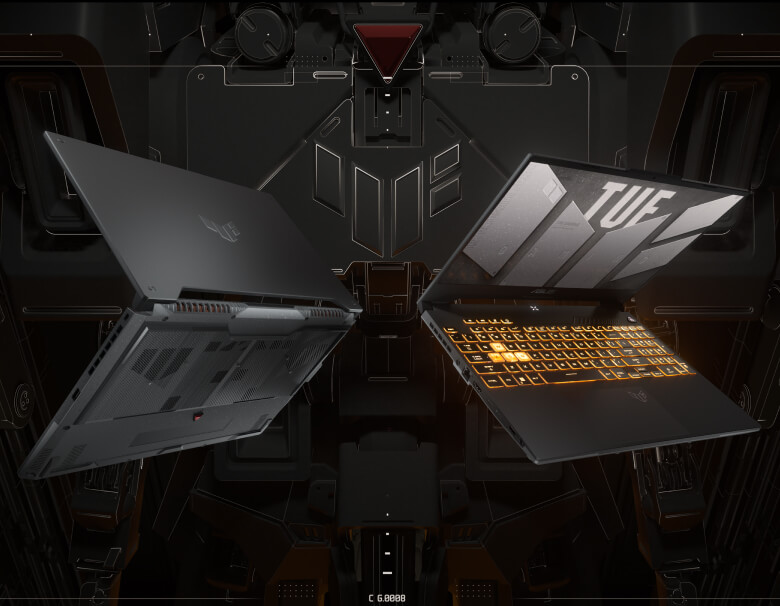Game On in Style: A Complete Guide to the ASUS TUF Gaming F15 FX507ZE & Smart Laptop Shopping
If you’re in the market for a balanced gaming laptop—capable of delivering strong performance without breaking the bank—the ASUS TUF Gaming F15 FX507ZE is worth a serious look. This article dives into what makes this model stand out and pairs that with a beginner-friendly laptop-buying guide to help you make an informed decision. You’ll also find expert shopping strategies, advice on when to upgrade, and a fair comparison with other top laptop contenders in 2025.
> Top 10 Most Anticipated Console Games of 2025: A Must-Have List for Gamers <
1. ASUS TUF Gaming F15 FX507ZE: What You Need to Know
Based on multiple reviews (blog.omggamer.com), the 2025 ASUS TUF Gaming F15 FX507ZE offers:
- Performance: Typically equipped with Intel Core i7-14700H CPUs and NVIDIA RTX-40-series GPUs (e.g., RTX 4070), it handles AAA games at 1080p effortlessly.
- Build Quality: The “TUF” series features MIL-STD-810H construction—durable chassis, reinforced hinges, and solid cooling.
- Display: A 15.6″ QHD (2560×1440) panel with high refresh rates (up to 240 Hz) and decent color coverage.
- Memory & Storage: Often ships with 32 GB DDR5 RAM and 1 TB NVMe SSD.
- Battery & Camera: A large 90 Wh battery for mobile gaming and a basic 720p webcam housed in a notch.
- Price vs. Value: Offers a powerful gaming experience at a more accessible price than premium competitors.

2. Beginner-Friendly Laptop Buying Guide
Key Factors to Consider
| Criterion | What to Look For & Why |
|---|---|
| Performance | CPU/GPU/RAM matter most for the tasks you’ll use (e.g., gaming or editing). |
| Display Quality | Higher res, refresh rates, and color depth matter for visuals and games. |
| Battery Life | For portability, aim for 6‑8 hours at minimum; up to 14‑20 hours if you’re remote working (tomsguide.com). |
| Camera & Mics | Essential for video calls—a good 1080p webcam is a plus. |
| Storage & Upgradability | NVMe SSDs offer speed. Check if you can add RAM/SSD later. |
| Budget | Set a realistic price range; mid-range gaming laptops start around $1,200 in 2025. |
| Build Quality & Portability | Durable chassis versus slim & light designs—trade-offs between toughness and weight. |
| Warranty & Support | International warranty and brand support add peace of mind. |
3. Latest 2025 Trends in Laptop Buying
- Efficiency + AI: Ultra-efficient CPUs (like Snapdragon X Elite) and AI NPUs are becoming popular—but gaming models still prioritize power.
- OLED and High Refresh Displays: More mainstream now, delivering smooth experiences and vibrant visuals.
- Battery Advances: Many laptops now max out around 20 hours in lab tests; real-world use varies by workload.
- Repairability & Sustainability: Pop-up repair guides and eco-conscious builds (e.g., Microsoft Surface) are gaining traction.
- Flexible Purchasing: Mid-year sales such as Prime Day and EOFY offer significant laptop discounts.
> Top 10 Must-Have Gaming Accessories for Console Players in 2025 <
4. Step-by-Step: How to Choose the Right Laptop
- Define Your Needs & Budget
- Determine your main activities (e.g., gaming, study, travel). From this, set a budget that covers performance, durability, and desired features.
- Shortlist Models
- Filter by minimum specs (e.g., RTX 40-series, 32 GB RAM). Include versatility—like the ASUS TUF F15, Microsoft Surface, and Apple MacBook variants.
- Compare Specs & Reviews
- Look at CPU/GPU benchmarks, battery tests, display quality, and input comfort. Use reputable review sources.
- Check Local Availability & Deals
- Align your purchase with sales events. Auctions like EOFY or Prime Day can lower costs significantly.
- Inspect Warranty, Ports & Upgradability
- Ensure you can easily replace or upgrade storage and memory.
- Test In-Person If Possible
- Check keyboard action, screen brightness, and trackpad quality.
- Make the Buy
- Compare retailer return policies and verify pickup/delivery options.
5. When Should You Upgrade—or Wait?
Upgrade if:
– Your current laptop struggles with critical tasks (e.g., can’t maintain 60 FPS in games or edit video).
– It has hardware faults or outdated ports.
– Your battery lasts under 4 hours.
Wait if:
– You only need minor performance boosts.
– Budget constraints are tight, and upcoming sales or new model releases are expected.
– Your laptop still meets daily needs reliably.

6. Fair Comparison: ASUS TUF F15 vs. Key Competitors
| Model | Pros | Cons |
|---|---|---|
| ASUS TUF Gaming F15 | Durable design, strong RTX 40xx performance, high-refresh QHD screen, value. | Heavier, average webcam & battery life typical of gaming laptops. |
| ROG Zephyrus G14/G16 | Sleek, premium build with OLED, high performance. | Build quality, battery 10–14 h, lighter. |
| Dell XPS 13 (Snapdragon) | Exceptional battery life (~19h), ultra-portable, fanless design. | Not designed for gaming; ARM compatibility issues noted. |
| MacBook Air/Pro M4 | Industry-leading efficiency and battery life (15+ hours), strong CPU, macOS quality. | Lacks NVIDIA GPU and upgrade paths; macOS ecosystem only. |
| Microsoft Surface Laptop 13 | Slower on heavy tasks, charger portability, limited GPU, and port diversity. | Slower on heavy tasks, charger portability, limited GPU and port diversity. |
7. Final Thoughts & Recommendation
The ASUS TUF Gaming F15 FX507ZE hits a sweet spot for gamers and performance users: robust build, powerful internals, QHD 240 Hz display, and upgrade-friendly design—all at a reasonable price. However, if portability or all-day battery life is your priority, consider ARM-powered Dell XPS or MacBook options instead.
If it feels like a laptop that you need to use this year, you can buy it from the store now.

